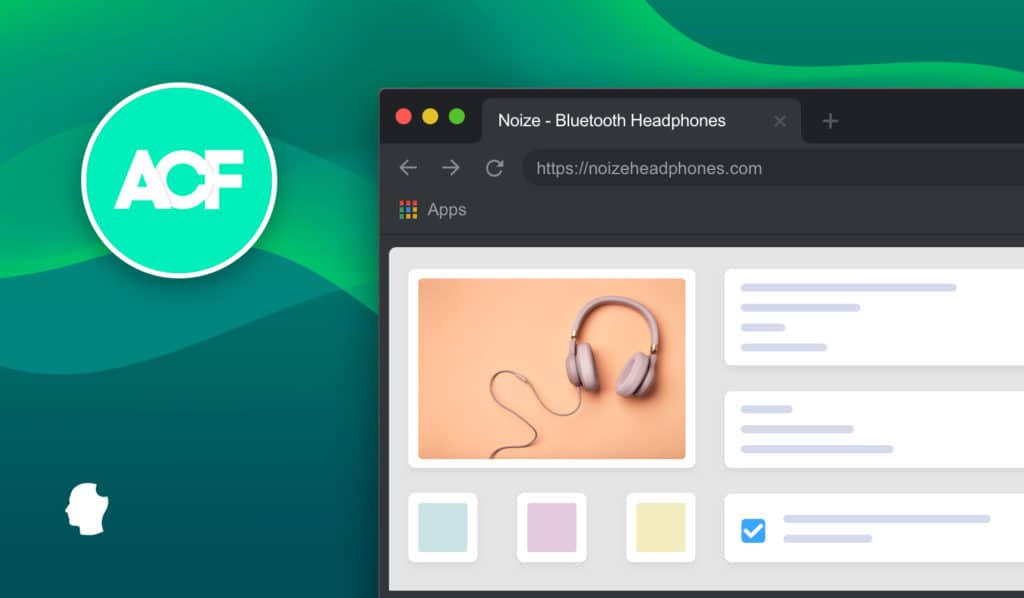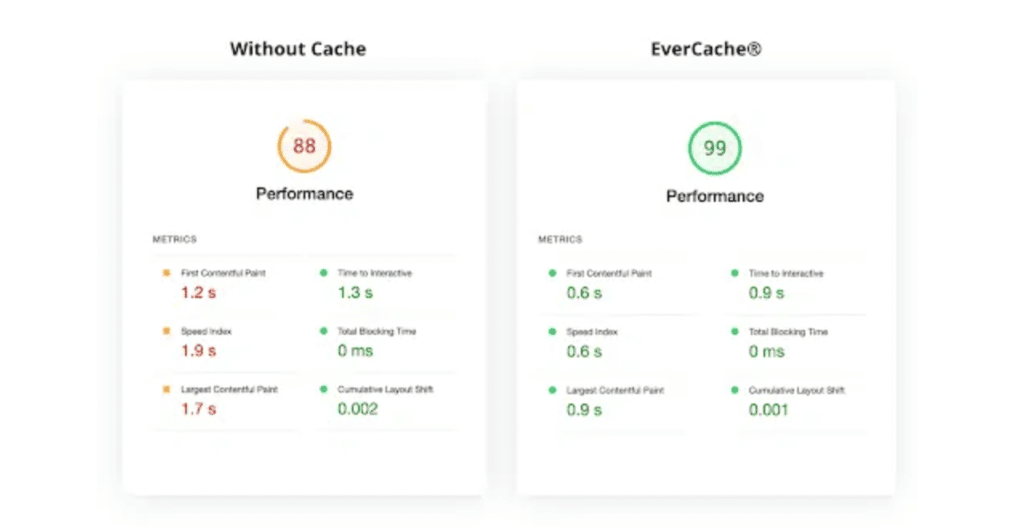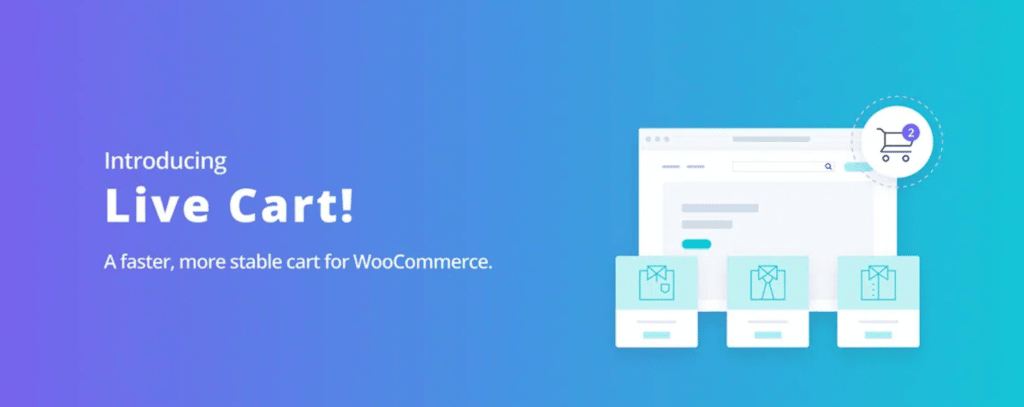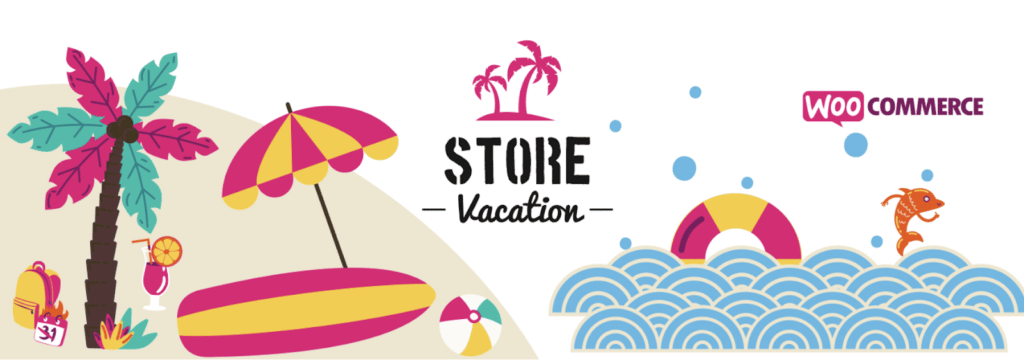
Build a Better WooCommerce Store in 2023
There are millions of eCommerce sites in the world (a quarter of which are powered by WooCommerce), but as hundreds of thousands of new eCommerce sites come online each year, standing out from the crowd can be downright daunting.
The constantly growing list of eCommerce platforms hasn’t helped either, as many of these solutions offer the same cookie-cutter site templates and features to everyone, over and over again.
For those looking to break out of the mold and build a more unique eCommerce experience, WordPress has become a popular choice.
The widely used content management system (CMS) allows eCommerce builders to create and customize their site(s) as they see fit, and build a larger digital presence around their eCommerce store (e.g. media-rich product pages or blog posts with up-to-date, relevant content).
But WordPress eCommerce is hard to explain without also covering the wide eCommerce functionality of WooCommerce.

The Wide World of WooCommerce Plugins
If you’re building an eCommerce site with WordPress, you may already be exploring WooCommerce and the different options it makes available for customizing eCommerce stores.
WooCommerce isn’t just the most popular WordPress plugin for eCommerce, it’s the most widely used eCommerce integration in the world. As millions of users have created unique storefronts using WooCommerce, it has grown an ecosystem of its own, complete with WooCommerce extensions for every aspect of the customer journey.
With so many options to choose from—across your WordPress site AND your WooCommerce store—selecting the best tools and integrations for your site can be time-consuming.
To help you narrow down your search, we’ve compiled a list of some of the best WordPress solutions and WooCommerce extensions you can use to build a high-performing eCommerce store—from setup and design all the way to security and maintenance.
Let’s dig in!

Sprucing up Your Storefront
“You eat first with your eyes,” goes the old Roman proverb—and while the Romans were likely talking about literal food, the adage also rings true for the way customers consume your digital content.
Ensuring your site is as visually appealing as it is functional is crucial to the overall success of your online store, as customers will form their first impressions of your brand and products based on the way they’re displayed on your site.
As noted above, this is an area where WordPress users have an advantage, because they can tap into the vast library of WordPress themes available for building great-looking WordPress sites.
While there are more than 10,000 free (or freemium) themes in the WordPress theme repository, there are also thousands of premium themes available, which usually come with more features and functionality in exchange for a one-time purchasing fee.
For eCommerce sites, a premium theme built specifically for digital commerce can often be a helpful starting point. Moreover, other premium themes that aren’t necessarily eCommerce-specific can offer site builders the freedom to build larger websites around a new or existing eCommerce store.

Leveraging Genesis for World-class WordPress Themes
The Genesis Framework and Genesis-built themes provide an excellent example of the creative freedom you can achieve when using quality WordPress themes.
Launched over a decade ago, the Genesis Framework serves as the foundation for a wide array of premium WordPress themes that allow you to quickly and easily build great-looking, secure, and WooCommerce-ready websites.
Breakthrough Pro, for example, is a Genesis theme that can be used for a variety of different websites, while also providing robust eCommerce functionality right out of the box. You can find additional Genesis themes well-suited for eCommerce sites here.
At WP Engine, all hosting plans, including our WooCommerce hosting plans, come with a suite of Genesis WordPress themes and plugins included—at no extra cost!
But even if you don’t host your digital store with WP Engine, taking advantage of the Genesis Framework and themes is a great way to spruce up your eCommerce site. In addition to providing you with a great-looking, mobile-responsive theme that’s optimized for search engine optimization (SEO), you’ll also be able to take full advantage of the powerful plugins that integrate with Genesis, such as:
- Genesis Blocks: Format your pages exactly how you want them to look with these highly useful and attractive blocks for the WordPress editor.
- Genesis Connect for WooCommerce: Seamlessly integrate WooCommerce with the Genesis Framework using this powerful plugin.
- Genesis eNews Extended: Get your visitors to subscribe to your email list even if they don’t purchase it right away.
- Simple Social Icons: We can all use more social media friends, and Simple Social Icons is one of the best plugins you can use to prominently show off your social media links.
- WooCommerce Blocks: WooCommerce has its own specialized WordPress blocks you can use to add product information to pages.
- Smash Balloon: Want to connect your Instagram feed to your eCommerce site? Smash Balloon is a great plugin that allows you to show off your feed quickly and easily.
- Testimonial Rotator: The best endorsement is a happy customer—get full social proof value from your best reviews with this Genesis-compatible testimonial slider.
Store Customization With
Advanced Custom Fields (ACF)
Customizing your eCommerce store is a great way to make your products more appealing to visitors and your site more user-friendly. One easy way to customize your theme and better serve the needs of your customers is by adding custom fields.
A custom field is a metadata category that allows you to more accurately describe the contents of a webpage or digital asset for both people and search engines. Search engines are then able to better understand your content (and potentially provide a bump in your rankings) and your audience can find what they’re looking for even faster.
Advanced Custom Fields (ACF) makes it easy to further customize WordPress site data, increasing ease of use for customers and site administrators alike.
For eCommerce sites, custom fields can be added to your product pages to give users a clearer understanding of your products, including additional pictures and video, product dimensions, or other variations (like sizes, colors, gift wrapping, and customizable options such as engravings and other personalizations).

Custom fields can also help you better organize the products on your site, making them more easily searchable for your audience, and they can even be used to provide important information to the manufacturers making your products, or pickers in a warehouse, as they create and ship items to their destinations.
Features like ACF’s Repeater and Flexible Content fields give site editors the freedom to change how posts, products, and other items are displayed while ensuring a consistent user experience and adherence to your brand guidelines.
ACF also integrates with Genesis and other WordPress themes, it comes equipped with 30 custom field types included, and its library of user-created fields includes more than 170 third-party extensions!
Want to find out more about building a new eCommerce site or refreshing an old one using Genesis and ACF? Learn more about getting started with Genesis here, or chat with a WP Engine expert for answers to your questions.

Accepting Payments and Fulfilling Orders
Once you have a WordPress site up and running (and even after you have WooCommerce installed), you’ll want to take a closer look at the way your site processes payments and the system you have in place (if any) for order fulfillment.
After all, receiving payments and fulfilling orders are two fundamental aspects of any eCommerce business, and making sure both processes are optimized on your site is key to providing a smooth customer experience.
WooCommerce Payment Gateways
While larger businesses may have the internal resources needed to develop and manage their own payment systems, accepting payments on your website generally requires a payment gateway and the services of a third-party provider (such as PayPal or Square).
WooCommerce makes it easy to add the payment gateway(s) of your choice. A long-standing best practice for eCommerce sites is to offer multiple payment options at checkout, which helps customers complete their purchases faster and reduces the likelihood of cart abandonment.
PayPal, which was launched more than twenty years ago and remains one the most trusted names in online payment gateways, is preferred by many eCommerce customers as an alternative to typing in their credit card information.
Square, which continues to evolve and develop new payment solutions, is also great because it provides hardware, meaning you can use Square for both online and in-person purchases.

WooCommerce Order Fulfillment
Order fulfillment can be tricky for any eCommerce business, and as your store grows, fulfilling orders at scale can turn into a tangled web of customer and product data.
One of the best ways to get ahead of this is to use an order fulfillment plugin or WooCommerce extension that not only sets you up for immediate success, but helps your order fulfillment processes scale as more customers come to your site.
Thankfully, WooCommerce takes the complexity out of payments and order fulfillment with a number of extensions and integrations for Paypal, Square, and even delivery services like FedEx and UPS. Here are a few of the top options:
- WooCommerce PayPal Payments: This simple payment method allows you to get started just with a PayPal account.
- WooCommerce Square: If you intend to take orders physically, definitely check out Square. This plugin will allow you to swipe credit cards or accept contactless payments in-person while updating your store inventory.
- WooCommerce Subscriptions: Want to sell ongoing subscriptions such as a “product of the month club” or sell digital subscriptions such as membership or coaching? This plugin enables subscription billing to securely manage recurring payments.
- WooCommerce Product Add-Ons: Not all orders are identical. For example, you might want to allow customers to select gift wrap or personalize their product. This plugin also allows your customers to select variations such as size or color visually.
- WooCommerce Shipping & Tax: Make sure you are legal! In the USA, you will definitely need this plugin, and if you’re located outside the States, check your location to ensure you stay on the good side of your tax authority.
- FedEx and UPS: The previous plugin is fine for adding USPS shipping or DHL, but not everyone can use those—and if they can, it’s not always the most economical option—so you might need an additional shipping integration.
As noted, setting up easy-to-use payment processing on your eCommerce site is fundamental to the success and longevity of your business. You can find out more about the various payment gateways available for WooCommerce here, and you can speak with a WP Engine representative 24/7 for more information on integrating payment solutions with your eCommerce site.

eCommerce Performance: Monitoring and Metrics
Once your store is set up and you have key elements such as payments and order fulfillment under control, you’ll have more time to explore additional tools and features that can boost your online visibility and website performance.
But before you can improve performance, you’ll need an effective way of measuring it.
WooCommerce Monitoring
While WooCommerce provides its own set of analytics, they may not include all of the metrics you want to track.
For a highly detailed analysis of how well you’re attracting site visitors and converting them into customers, you can’t beat the industry standard, Google Analytics.
Google Analytics can provide you with a myriad of metrics and useful data about your eCommerce transactions as well as your larger site traffic, engagement, and activity trends.
Check out this article for a detailed tutorial on how to use Google Analytics for eCommerce sites.
Another way WP Engine’s eCommerce customers can monitor their sites without creating extra work for themselves is with Site Monitoring, available for just $4 per month. This always-on monitoring solution helps you respond to outages quickly, notifying you via email or Slack (or both!) when an outage has been detected.
For eCommerce sites, this is especially helpful as every minute lost to an outage equals time your customers can’t shop for your products, and any amount of downtime eats away at the hard-earned trust you’ve built with your existing audience. Site Monitoring makes sure you’re aware as soon as a problem is detected, saving you from an influx of calls from your customers, your clients, or even people within your company.
Once you’ve begun monitoring key metrics you’d like to improve upon, you can start focusing on some of the areas below.

eCommerce Website Optimization: Search and Speed
Even if you have the best store on the web, it won’t do you any good if no one can find it.
Findability begins with SEO, and If you’re looking for ways to boost search optimization on your eCommerce site, one of the best ways to do so is by taking advantage of plugins such as Yoast SEO, SEOPress, or All In One SEO (to name a few).
These plugins, which are used by millions of WordPress sites, can check your content for SEO-related issues and will help you improve your content over time to attract as much search visibility as possible.
Retailers often rely on high-quality images to entice their customers to make a purchase, but the size and quantity of those images can bog a website down. To ensure your site loads quickly, even during high-traffic events like big sales, you might want to enlist the help of an image optimization plugin.
Some of the most popular image optimization plugins are WP Offload Media, Smush, and the EWWW Image Optimizer. All of these will help you compress large image files or serve up your media via a CDN, so you maintain site speed without sacrificing the quality of your media files.
Caching: WordPress and eCommerce
More cached content equals better—and faster—browsing for your shoppers. However, WooCommerce uses cookie detection to bypass cache, and these cookies are even applied to static pages after a shopper adds an item to their cart.
In turn, this static content, served without cache applied, can more than double a page’s load time!
At WP Engine, we’ve tackled this issue head-on by implementing a new method of cookie exclusion that detects when dynamic content is being served.
EverCache®, WP Engine’s proprietary caching system that’s provided to all customers, knows when to ignore the cookies used by WooCommerce and optimizes cache delivery for static pages.

EverCache® also automatically bypasses cache when it will break things such as cart functionality, checkout pages, or the user experience for authenticated shoppers.
The end result is more cached pages served, especially for visitors further down the sales funnel.
Optimize, Don’t Disable, WooCommerce Cart Fragments

WooCommerce Cart Fragments pose a dilemma for eCommerce websites as they provide needed cart functionality (including the all-important “add to cart” function) while also generating AJAX requests that can quickly add up and slow your site down.
While disabling Cart Fragments altogether has been a common approach for solving this problem, WooCommerce users no longer have to choose between cart functionality and site stability and speed.
Live Cart, which comes standard with all WP Engine eCommerce plans, optimizes WooCommerce Cart Fragments requests to keep your customers’ dynamic carts up to date and running smoothly without sacrificing speed.
Lightning-fast, Relevant Search Results
Last but not least, the search functionality shoppers can use when they come to your eCommerce site is a prime place for additional optimizations.

Search is one of the most important factors for digital storefronts, as more than 40% of online shoppers go directly to the search bar on a website. Those customers are also more than twice as likely to complete a purchase when they find the item(s) they’re looking for.
But the default search functionality in WordPress doesn’t include a ton of options, including assistance with misspelled words or “did you mean” relevant searches.
Adding custom search functionality to your WordPress eCommerce site is a great way to address this, but it can also turn into a serious development project. However, WP Engine makes this easy too.
Through its WooCommerce-optimized hosting and specifically Instant Store Search, which comes standard with every eCommerce plan, you can make it easier for customers to search your site for the products they want, and return those search results up to 10X faster.
Find out more about Instant Store Search here.
WooCommerce Security

Security is paramount for any type of website, but it’s particularly important for eCommerce sites given the sensitivity of customer data such as credit card information or other personal details these sites often handle.
In fact, e-Commerce sites often need to meet minimum security and compliance requirements for things such as PCI, COPPA, or GDPR (even if a business isn’t based in the EU).
One of the best options for keeping your WooCommerce store (or any other type of website) safe and secure, is to host with a managed provider, and ideally one that specializes in WordPress.
A WordPress-specific host will be able to assist you with server-side configurations and other WordPress-specific security considerations such as plugin and theme updates.
As noted above, plugins and themes are some of the best parts of WordPress, and they’re instrumental in helping eCommerce site builders get their storefronts off the ground.
WooCommerce itself is a plugin, and in addition to the wide list of plugins you can use to customize your eCommerce site, there are also security plugins, such as Wordfence or Lognizer, you can use to bolster your site’s defenses.
Additionally, plugins (and themes) are central to the security of your eCommerce site as they will provide regular updates for patching vulnerabilities and fixing bugs.
But staying on top of those updates is where some websites fall behind. Plugin and theme maintenance can be time-consuming, which is why WP Engine created Smart Plugin Manager, which automates plugin and theme updates so you don’t have to.
While Smart Plugin Manager is available as an added feature for sites hosted on WP Engine’s platform, all WP Engine eCommerce customers gain access to Smart Plugin Manager for free—it’s automatically included with every eCommerce plan.
Smart Plugin Manager will test new updates first to ensure they won’t have unintended consequences for your site before deploying the available updates to your live environment. By turning on Smart Plugin Manager, vulnerabilities in any of your WordPress plugins are addressed as soon as an update is made available.
Taking a Break
You’ve worked hard, you’ve done well, and you deserve a break. That’s where Woo Store Vacation comes in. The aptly named plugin puts your store into vacation mode for a set period, allowing you to take some time off without worrying about upsetting customers who are waiting to hear about their orders.

This temporarily turns off the ability to purchase products by disabling checkout while allowing people (and search engines) to continue browsing your product catalog.
Then, when you’re back from vacation, caught up on old orders, or you’ve dealt with whatever situation required you to put your store on vacation mode, you can easily unpause your store and start taking orders again.

Build a Better WooCommerce Store With WP Engine
The list above includes some of our favorite plugins and tools for WooCommerce stores, and our team is dedicated to improving experiences on WordPress for digital sellers of all kinds.
No matter what you’re selling, do so safely and securely with an eCommerce plan from WP Engine.
Check out all of our plans to find the one that’s right for you, or speak with a specialist to find out more about your options!











